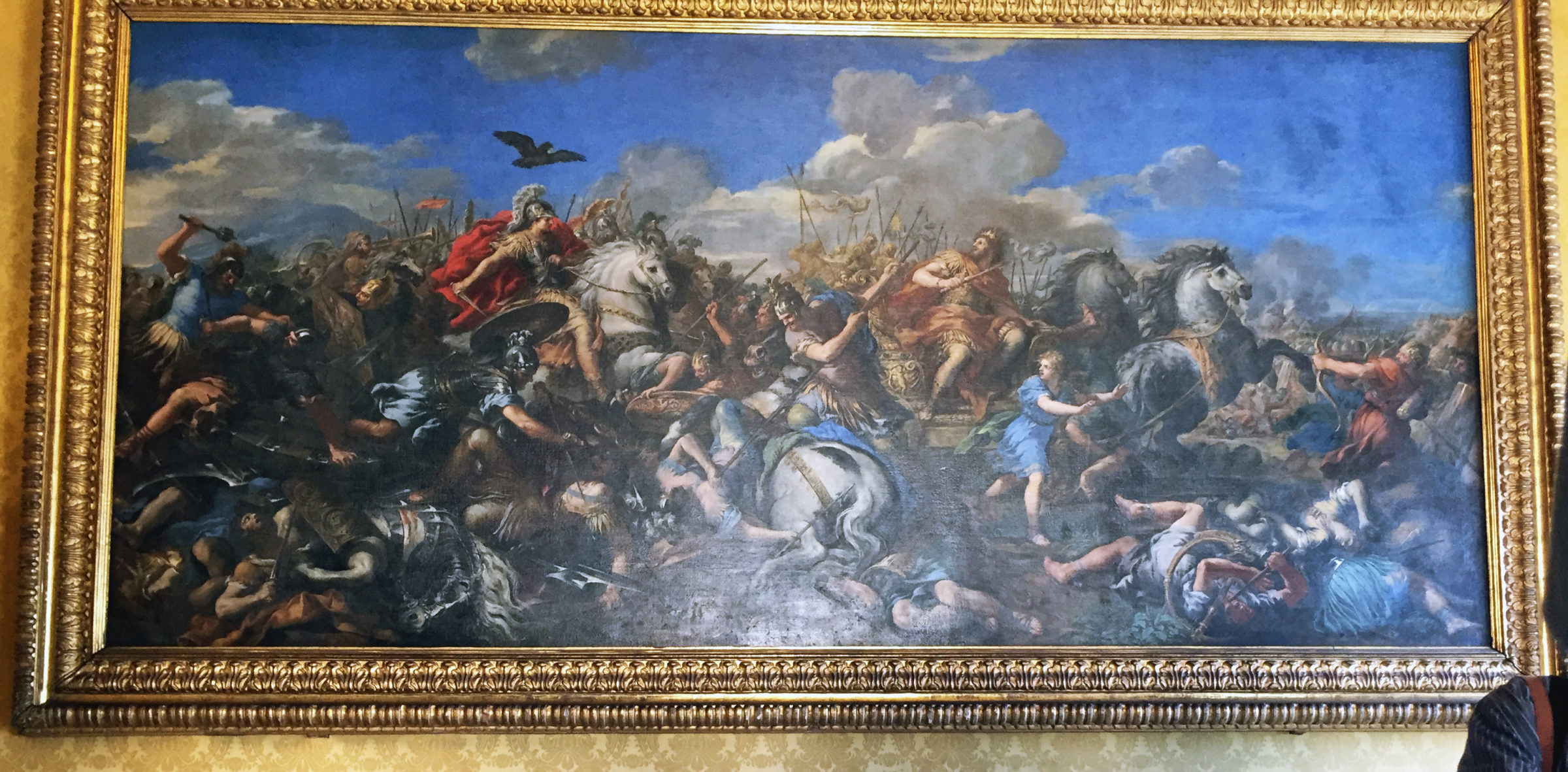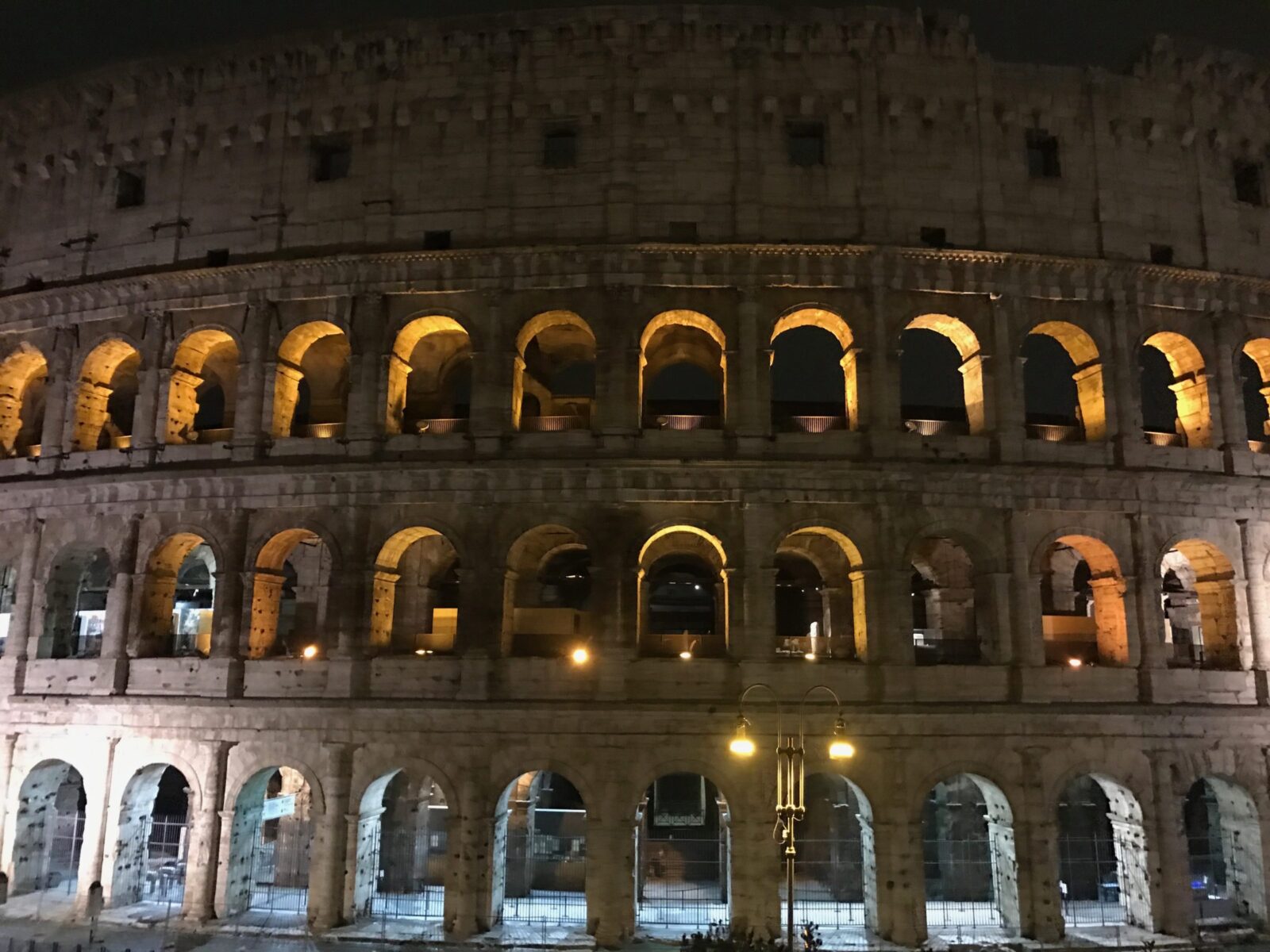Student Blog: Roman Aesthetic, BTS in Italy 2
This is a student blog post submitted by Melanie Lofgren, C’18. Melanie is a psychology major, with a biblical and theological studies minor. She spent her spring break in Italy with a group of 12 students and two professors. On the trip, students considered the continuity between the life of the earliest Christians in their cities and present-day Christians in the city of Chicago.
This is a student blog post submitted by Melanie Lofgren, C’18. Melanie is a psychology major, with a biblical and theological studies minor. She spent her spring break in Italy with a group of 12 students and two professors. On the trip, students considered the continuity between the life of the earliest Christians in their cities and present-day Christians in the city of Chicago.

Today I’ll share about something I’m not very knowledgeable about, and yet find incredibly interesting and thought-provoking.
Rome and art.
I’ll start at the Vatican. We went to the Vatican museum on Tuesday and spent the day in our groups viewing, listening, and reading. Everything was simply beautiful. The artworks expressed feelings, depicted moments or a series of moments in time, or the feeling of multiple emotions, history, and so much more!
I want to focus on the Sistine Chapel. No pictures were allowed, as I was sternly told by a clearly aggravated Italian man shaking his hand at me. So, sorry, I don’t have any photos. The effort and thoroughness Michelangelo used to paint the chapel are insane to think about, not mention painful with the method he had to use. He depicts the final judgment, stories of Moses, moments in Jesus’s life, prophets, the book of Genesis, the apostles, and more. The amount of Christian history and significance in that room is incredible. Couple that with the one who painted it, and where . . . I was standing in one of the most significant places for Christians, and I’m Protestant.
As I stood in front of piece after piece in different museums, I felt something like what I like to believe the artists were feeling. It’s all subjective and can be interpreted differently, and yet each piece is timeless and has a story. Most Roman art we saw conveyed a historical event or religious belief.
 Take the painting by Pietro Aquila, for instance. Located in the Room of Triumphs in
Take the painting by Pietro Aquila, for instance. Located in the Room of Triumphs in
the Capitoline Museum, the battle scene depicts the victory of Alexander over Darius (ca. 1650–92). I am initially frightened because I am extremely uncomfortable, afraid, and disapproving of the violence. However, as I take a closer look I see a deeper message. This is not simply a battle between Alexander the Great and the ultimate defeat of Darius, but it elevates Alexander to a higher level than previously. The sky is clear and bright revealing that this is a good scene. The bird flying overhead could be a scavenger waiting for a meal, a symbol for the inevitability of death. There are faces full of terror and ones of absolute confidence and power.
 Before I go, I want to share my favorite painting with you; it’s the fresco of the riot between Pompeiians and Nucerians, 59 A.D., Pompei, Volume IV, plate XXXII by Fausto and Felice Niccolini. This is an illustration of a riot that occurred outside of the amphitheater in Pompeii in 59 CE, speculated to have been between organizations from different towns. It’s distinctive because the artist decided to paint this event rather than a gladiatorial fight, which was the most common use of the amphitheater. They’re also what you’d assume people would want to remember in a painting. It may be that the artist was connected to the riot somehow. The piece takes a bird’s eye perspective which removes the artist from the scene, whether that be to distance themselves to not be triggered by the event or because they were not there, I cannot say. It also is very spread out; each brawl and element are separated from each other, this is very different from the other art we saw during this time and that made it even more interesting. It is just so cool!
Before I go, I want to share my favorite painting with you; it’s the fresco of the riot between Pompeiians and Nucerians, 59 A.D., Pompei, Volume IV, plate XXXII by Fausto and Felice Niccolini. This is an illustration of a riot that occurred outside of the amphitheater in Pompeii in 59 CE, speculated to have been between organizations from different towns. It’s distinctive because the artist decided to paint this event rather than a gladiatorial fight, which was the most common use of the amphitheater. They’re also what you’d assume people would want to remember in a painting. It may be that the artist was connected to the riot somehow. The piece takes a bird’s eye perspective which removes the artist from the scene, whether that be to distance themselves to not be triggered by the event or because they were not there, I cannot say. It also is very spread out; each brawl and element are separated from each other, this is very different from the other art we saw during this time and that made it even more interesting. It is just so cool!
Interested in traveling with BTS next spring break?
Next year’s Spring Break Rome-Pompeii tour course, Christian Origins from the City Center, is accepting applications now.
How does 4 credit hours and 10 days in Rome and Pompeii over Spring Break 2018 (March 9-19, 2018) sound?
The BTS department invites students to join them for an experience that they’ll never forget while also getting their second BTS Core course.
Reserve a spot on the tour before they’re all gone! Program leaders: Drs. Joel Willitts & Mary Veeneman.
FOR MORE INFO & TO APPLY: ������.BTS.ROME@GMAIL.COM
NON-REFUND DEPOSIT DUE: September 12, 2017



